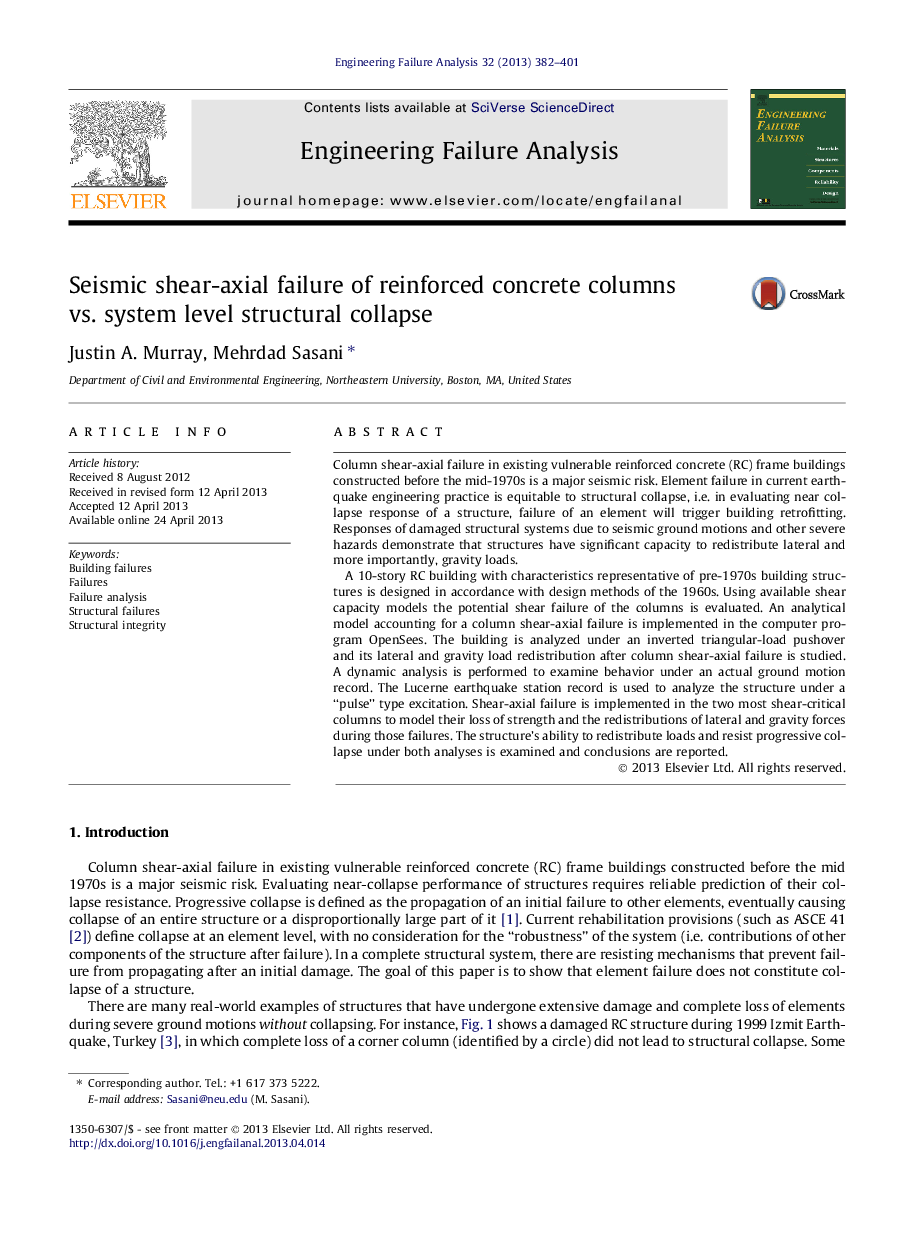| Article ID | Journal | Published Year | Pages | File Type |
|---|---|---|---|---|
| 774090 | Engineering Failure Analysis | 2013 | 20 Pages |
•Column shear-axial failure does not necessarily constitute structural collapse.•A column failure leads to an increasing shear demand in columns above and below.•Columns above a failed column become significantly more susceptible to failure.•Shear-axial failure of columns over the same column line is not significantly damaging.•Axial failure of a column causes an immediate drop in compression of columns above.
Column shear-axial failure in existing vulnerable reinforced concrete (RC) frame buildings constructed before the mid-1970s is a major seismic risk. Element failure in current earthquake engineering practice is equitable to structural collapse, i.e. in evaluating near collapse response of a structure, failure of an element will trigger building retrofitting. Responses of damaged structural systems due to seismic ground motions and other severe hazards demonstrate that structures have significant capacity to redistribute lateral and more importantly, gravity loads.A 10-story RC building with characteristics representative of pre-1970s building structures is designed in accordance with design methods of the 1960s. Using available shear capacity models the potential shear failure of the columns is evaluated. An analytical model accounting for a column shear-axial failure is implemented in the computer program OpenSees. The building is analyzed under an inverted triangular-load pushover and its lateral and gravity load redistribution after column shear-axial failure is studied. A dynamic analysis is performed to examine behavior under an actual ground motion record. The Lucerne earthquake station record is used to analyze the structure under a “pulse” type excitation. Shear-axial failure is implemented in the two most shear-critical columns to model their loss of strength and the redistributions of lateral and gravity forces during those failures. The structure’s ability to redistribute loads and resist progressive collapse under both analyses is examined and conclusions are reported.
